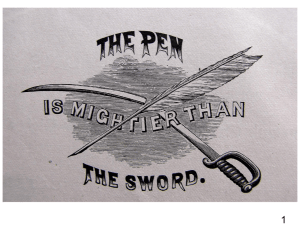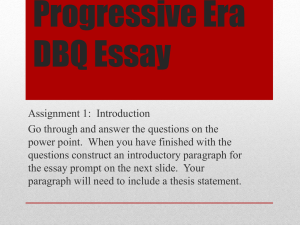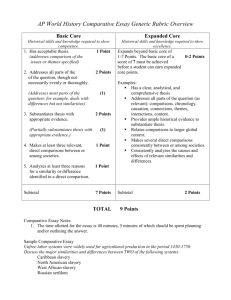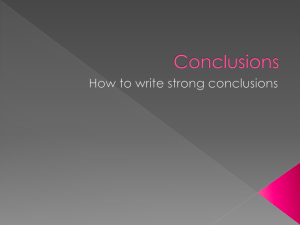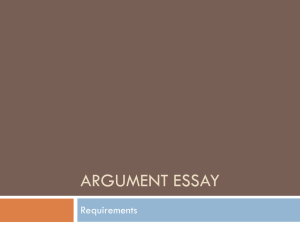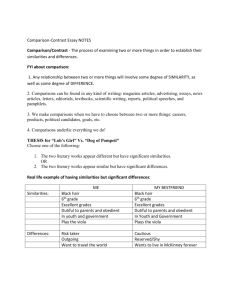File
advertisement
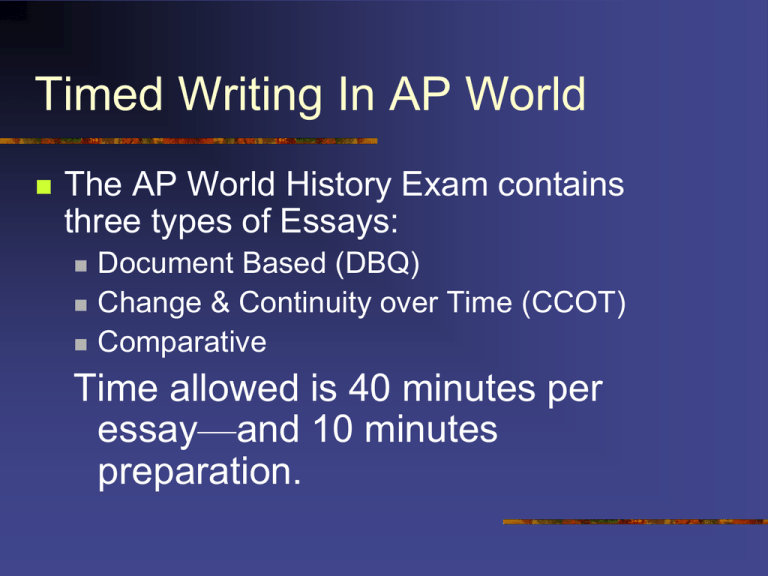
Timed Writing In AP World The AP World History Exam contains three types of Essays: Document Based (DBQ) Change & Continuity over Time (CCOT) Comparative Time allowed is 40 minutes per essay—and 10 minutes preparation. The Comparative Essay Basic Core Historical skills and knowledge required to show competence. 1. Has an acceptable thesis (1) 2. Addresses all parts of the question. (2) 3. Supports thesis with appropriate historical evidence. (2) 4. Makes at least one or two relevant, direct comparisons between and among societies. (1) 5. Analyzes at least one reason for a similarity or difference identified in the direct comparison. (1) The Comparative Essay EXPANDED CORE Historical skills and knowledge required to show excellence The basic core score of 7 must be achieved before a student can earn expanded points. (1-2 Points) Has a clear, analytical, and comprehensive thesis. Addresses all parts of the questions (as relevant): comparisons, chronology, causation, connections, themes, interactions, content. Provides ample historical evidence to substantiate thesis. Relates comparisons to larger global context. Makes several direct comparisons consistently between and among societies. Consistently analyzes the causes and effects of relevant similarities and differences. Construction Dissect your question: Compare the social and organizational environments of Middle School and High School. What are the task words? What are the parameters? What are the key terms? Construction Pre-Writing Compare urbanbased societies with pastoral/nomadic societies: political, social (class, labor, and gender), economic, cultural SPICE or deeper Thesis This is your “roadmap” or “trailer”. One point, but oh so important. Fully address the question being asked. Take a position. Provide organization categories that will be used in the essay. Compare the major political developments of two of the following Classical Civilizations: India, China, or Mediterranean. Classical India and Classical China have both similarities and differences in their political developments. (What is Missing? This is 3rd grade stuff) There are similarities and differences in the ways India and China expanded, controlled their territory, and approached religious differences. (BETTER— but still missing? This is 8th grade stuff) The governments of India and China were similar in how they expanded their territory, but were different in the ways they governed territories and in their attitude toward religious freedom. BEST Thesis - The governments of India and China were similar in how they expanded their territory, but were different in the ways they governed territories and in their attitude toward religious freedom. Body Paragraph 1 –similarities in the ways India and China expanded Body Paragraph 2 – differences in the ways they controlled their territory Body Paragraph 3 – differences in the ways they approached religious freedom Body Paragraphs A TOPIC SENTENCE that connects to the thesis statement (the ways India and China expanded). Then evidence (details) and analysis (why). Both Classical Indian and Chinese Civilizations began with expansion through military conquests. The Mauryans more than the Guptas used their massive war machine to forcefully unify regions of India after defeating Alexander’s Generals. Han expansion included military conquests of not only Chinese territories but also regions along the Silk Roads. In both China and India, the dynasties were founded by generals. The desire to expand their territory was important because this was the means by which both empires increased their resources and power. Conclusion Paragraph Restate the thesis and give the essay a finished “feeling”. This could be where you make comparisons to the larger global context. (Maybe tie in the Romans) REMINDERS Budget your time! COMPARE and CONTRAST—Give RELEVENT and DIRECT Comparisons This is an academic essay – use appropriate language. Do not use personal pronouns “I”, “you”, or “me”. Make sure that your body paragraphs connect to your thesis. Phrases that Show Comparison Similar to…, Both…, Like…, Compared to…, In the same way…, Analogous to…, One connection between…, Phrases that Show Contrast One difference between… Unlike…where…, In contrast to…, Whereas…, Though…, Phrases that Show Causation One reason that explains why…was… One cause of…was… One effect of… Because of… Consequently… As a result…




